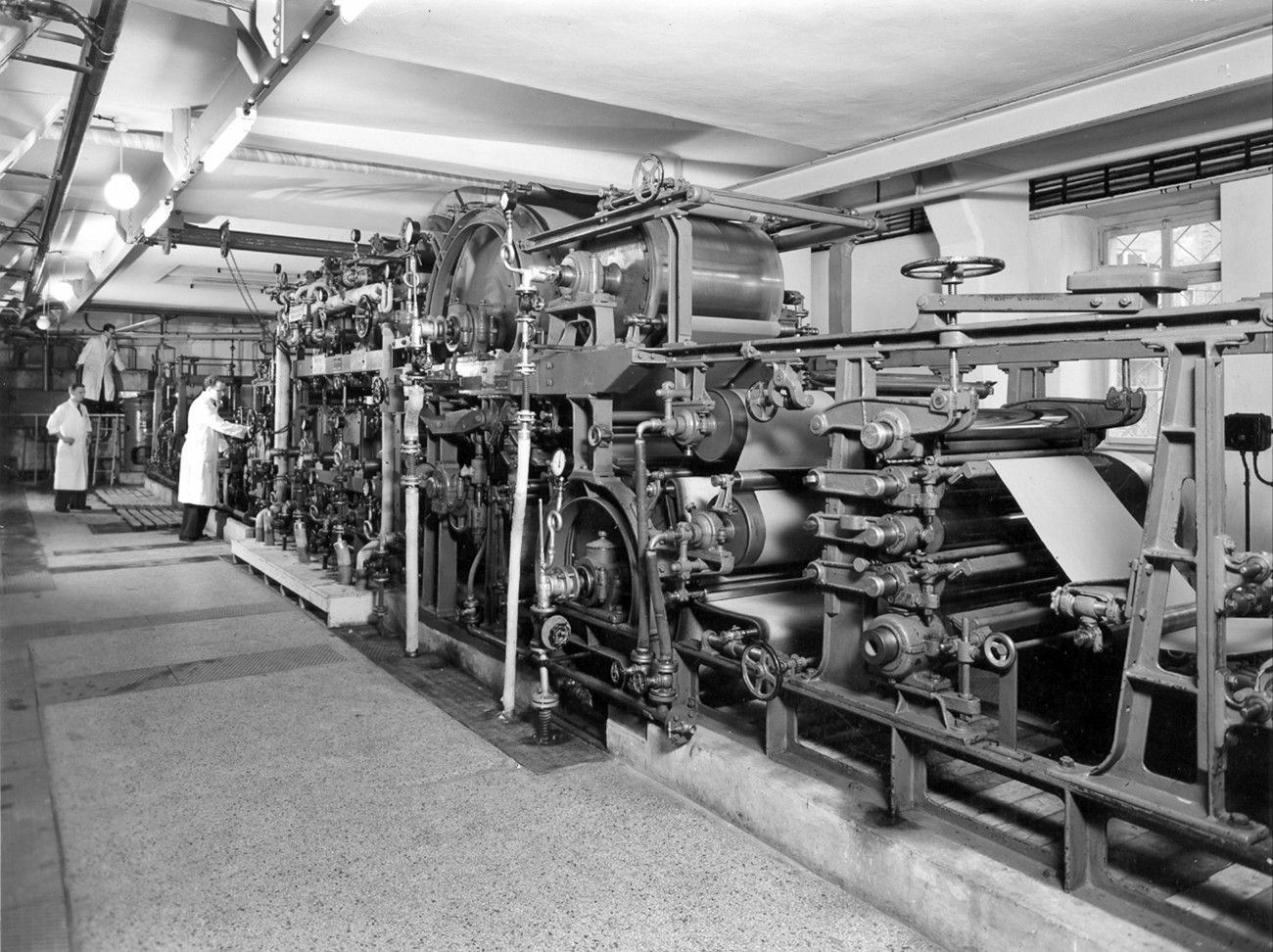Dr.-Ing. Walter BRECHT succeeded his teacher Prof. Müller on 01 April 1931 at the young age of only 31. After studying paper engineering and working as an assistant (1920-1924), which he completed in 1925 with his dissertation at the TH Darmstadt on the topic “Some physical properties of a sulphite pulp fibre suspension”, he spent one year studying at the fine paper mill Hammermill Paper Company in Erie / Pennsylvania. On his return to Germany, he began five years as plant manager at the Augsburg mill of G. Haindl'sche Papierfabriken. Although he was already the third professor, his beginnings were modest and not under a good star. Prof. BÖHME described the situation on the occasion of Prof. Brecht's 85th birthday as follows: “On July 13, 1931, as a result of Black Friday on the New York Stock Exchange in October 1929, Danatbank collapsed in Darmstadt. This was the beacon of a severe crisis that quickly worsened and spread throughout Germany. The brief stability phase of the Weimar Republic was over. Hunger parades took place in Darmstadt in the summer, and almost one in five of the city's employable citizens had no job. In the state elections in November, the NSDAP in Darmstadt won 45% of the votes, considerably more than the state average, where it recorded 37%. In the Landtag, hall battles were fought – the NSDAP, although the strongest faction, had no chance to form a cabinet, the Social Democratic bourgeois minority government remained in office – especially when the Landestheater was debated, whose fame as the most modern stage in Germany outside Berlin under the leadership of Carl Ebert and Gustav Hartung lent the new Darmstadt splendour and boosted the hatred of the bourgeois mob. We all know what happened next. Walter Brecht survived this period of our history, concentrated on scientific work, the development of his subject and the expansion of the institute” [19].
Prof. Brecht himself describes the circumstances of his start as a newly appointed professor in an essay on the occasion of the 50th anniversary of IfP. He (Prof. Brecht) “had an assistant, a typist and, for the few days the paper machine was running, a foreman who belonged to the Chair of Hydraulics.” [13] In addition to this very modest staffing, the Institute of Paper Manufacturing at that time also had only very limited facilities, which were limited to one professor's room and one assistant's room as well as two paper testing rooms in the former main mechanical engineering building, which were also far apart from each other.
In addition, there was the narrow pilot plant room in which the test paper machine was housed. There was therefore an understandable desire to merge and expand the institute's premises, which initially began with the construction of an experimental wood grinding shop and a satin finishing laboratory in the former Alexander Barracks (Fig. 3), which had recently become part of the university's building wing, in 1932. Finally, the test paper machine was moved to the Alexander Barracks, where it was modernised with a multi-motor drive, a suction gauche and a large drying cylinder for the production of smooth papers on one side. In 1938 the move was finally completed with the establishment of rooms for secretaries, assistants and doctoral students, as well as an air-conditioned paper testing room, a microscopy room and a “beautiful lecture hall”, as Brecht called it.






